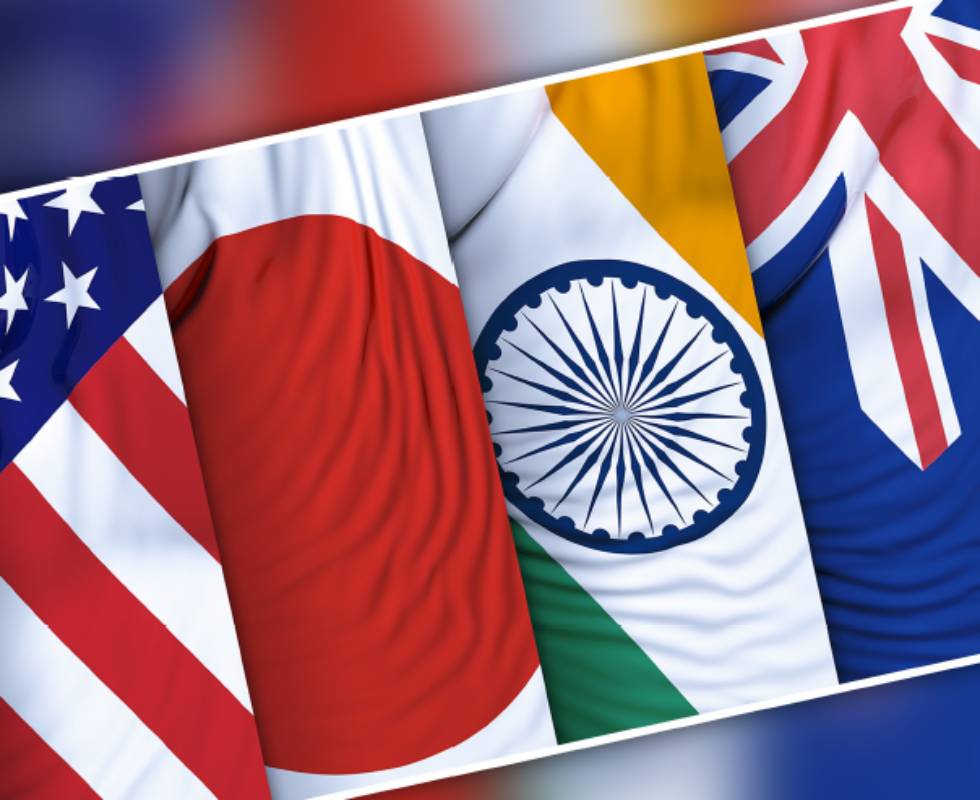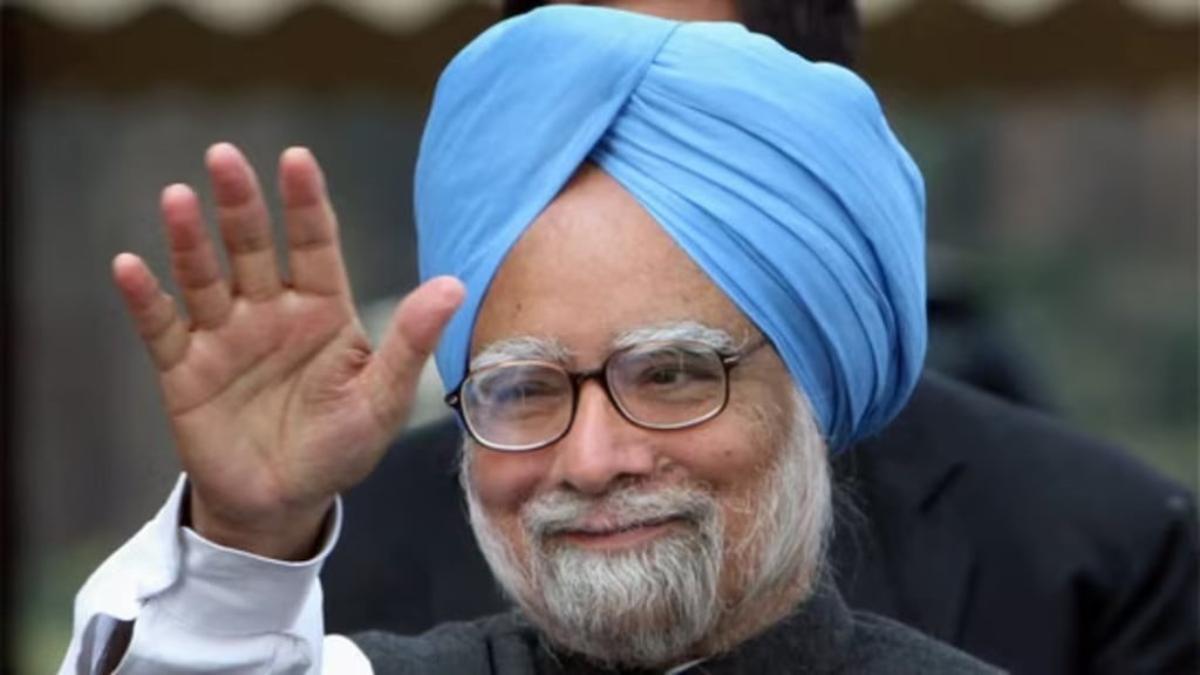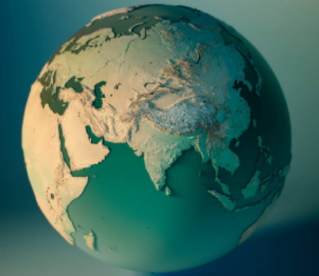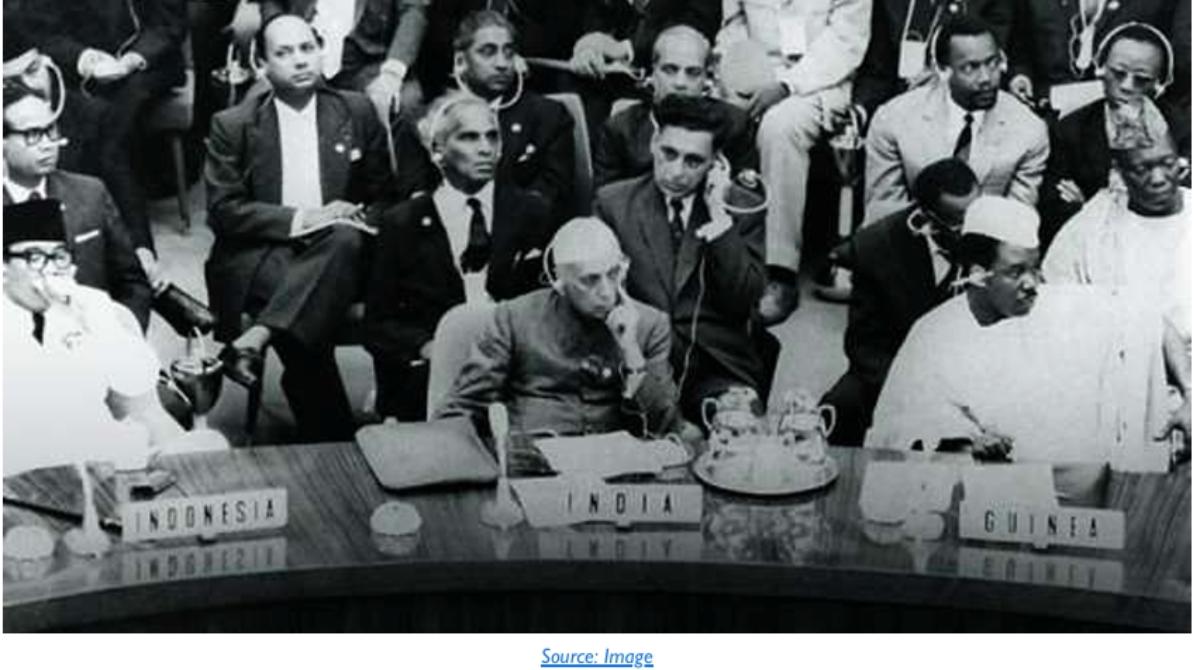Introduction
The question regarding the future of the Quad is pertinent because just about two years ago the Chinese Foreign Minister Wang Yi had disdainfully described it as ‘’sea foam’’ and predicted that it would crumble under its own contradictions. China’s confidence about the unviability of this grouping comprising of Australia, India, Japan and USA, was possibly not misplaced. It was aware that all four members of the Quad have wide-ranging and deep trade and economic ties with China which would not permit them to adopt overtly adversarial positions towards China. It would have thought that, like in 2007, it would be able to browbeat these countries and the Quad would be no more than a low-level discussion group.
Recent Developments
In fact, the trajectory of the Quad over the last three years after it was resurrected by the US President Donald Trump with the leaders of the other three countries on the margins of the East Asia Summit in Manila, Philippines in November, 2017, was quite similar to what the Chinese Foreign Minister had predicted. Mid-level officials of the four countries routinely met twice a year on the margins of Regional or Global Summits/Meetings to discuss prosaic issues related to humanitarian assistance; disaster relief; free, open and inclusive Indo-Pacific; counter-terrorism etc. while affirming the centrality of ASEAN. No concrete or specific measures or actions were deliberated upon or taken.
The four countries could not issue Joint Statements after these meetings but issued separate read-outs thereby strengthening the impression that there were sharp differences between them. In addition, these countries went out of their way to reassure that this grouping as also the geographical construct of the Indo-Pacific was not directed against any country. No mention of China was made by any of these countries specifically or explicitly as the raison d’etre of their coming together after an interregnum of 10 years. However, all those who read between the lines were left in no doubt that it was the increasing assertiveness and growing influence of China in the South China Sea (SCS) and on the global platform which was the principal reason for this mechanism to be revived.
After four meetings at the official level, the four countries met at the Ministerial level for the first time on the margins of the UN General Assembly Session in September, 2019 in New York. It was decided that regular Ministerial-level Meetings of the countries will take place in future. Another official-level meeting took place in November, 2019 on margins of the East Asia Summit in Bangkok.
With the above perspective in view, no political or security analyst could have anticipated just a year ago that the foreign ministers of the four countries would travel expressly during the current highly contagious pandemic to Tokyo to attend a stand-alone meeting of the grouping. This is testimony to the long distance that the grouping and the four countries have traversed over the last three years since the second incarnation of this Informal gathering emerged in 2017and even more so, over the previous one year.
The previous hesitant and tentative attempts by the four countries to come together occurred at the time of the Tsunami in South East Asia in 2004 when the four countries collaborated to provide relief and succour to the affected countries in ASEAN, Sri Lanka, Maldives, Timor L’este, etc. The then Japanese Prime Minister Shinzo Abe during his address to the Indian Parliament in 2007, floated the idea of the Indo-Pacific as an ‘’Arc of Freedom and Prosperity… along the outer rim of the Eurasian continent’’. The initiative however sputtered to a standstill quickly on vigorous opposition from China which castigated the move as being directed against it. Kevin Rudd, the then Prime Minster of Australia quickly wilted under the pressure and withdrew from the informal outfit.
China’s Rise
The decade beginning 2008 witnessed visible evidence of China’s increasing political, military and economic strength as well as its growing assertiveness in its bilateral dealings with its neighbours as well as in international fora. The two defining events of this period which gave rise to such tendencies by China were the international financial and economic crisis of 2008 and the successful hosting of the Beijing Olympics by China the same year. The global economic crisis proved to be a shot in the arm for China as it was able to register a comparatively robust growth by injecting a significant stimulus while the western economies including the USA, Europe as well as Japan experienced a precipitous downturn as a result of the subprime mortgage lending crisis in USA followed by the European sovereign debt crisis from 2009 onwards. The impressive hosting of the Olympics by Beijing in 2008 imbued it with confidence that it was ready to take on the world. A few other significant developments took place over the last decade.
Although Chinese assertiveness and expansionism had started becoming visible from the reign of Hu Jintao, it assumed an entirely different dimension with the advent of Xi Jinping as General Secretary of the Chinese Communist Party in 2012. Soon after taking over, he floated the aspirational idea of the Chinese Dream of making China a moderately prosperous country by 2021 and taking back all territories that it considered its own by that date. Notwithstanding the fact that there is no evidence to substantiate this contention, China considers the five fingers of the palm of Tibet viz Ladakh, Nepal, Sikkim, Bhutan and Arunachal Pradesh, its own. And Xi Jinping vowed in 2013 that China will get these territories under its control by 2021.
Another significant course of events ensued when China started occupying and militarising islands as also creating artificial ones in the South China Sea from 2015 onwards. Xi Jinping’s solemn assurance to Barack Obama in 2015 that China will not militarise the South China Sea did not stand in the way of its wicked design to convert SCS into a “Chinese lake” based on the false and unsustainable assertion of historical claim over this maritime body. The emphatic unfavourable verdict on its contention by the Hague based Permanent Court of Arbitration (PCA) in July 2016 in the case filed against China by Philippines also did not deter China from advancing relentlessly in establishing de-facto control over most of SCS.
There are questions about the coronavirus which originated in Wuhan, China in late 2019. The US has accused China of being deceitful in dealing with the issue when the epidemic first surfaced at the end of last year. China was able to recover much quicker than the rest of the world, both in restoring its people to health as well as in revival of its economy. Although it still has a long way to go to achieve economic growth levels that it enjoyed before the pandemic, its revival has been much swifter and sharper than most other countries. This asymmetric impact of the pandemic on the rest of the world vs. China raises some questions.
This scenario with the rest of the world frantically grappling with the twin challenges of coronavirus pandemic as well as the unprecedented economic downturn and the resultant social and political upheaval this created in several countries, could be viewed as a strategic opportunity by China to realise its expansionist ambitions. In the absence of Covid-19, possibly China might have taken a few more years to consolidate itself internally and externally but presumably it found the global economic, political and security scenario too tempting to give a go by. It apparently surmised that its only real challenger and competitor viz the USA is too enmeshed in dealing with the pandemic, managing its economy, contending with its divisive domestic politics and a highly contentious Presidential election. Thus the USA would not have the strength or stamina to confront China in any meaningful way. But this is where it seems to have committed a huge strategic error.
The Current Setting
China has caused the rapid intensification and escalation in engagement amongst the Quad nations. The four members of the Quad and several other countries had already started feeling deeply concerned over the last many years at the increasing Chinese assertiveness in the South China Sea. It became clear that China had over the last few years significantly expanded its military control over SCS and none of the ASEAN member states had been willing to lift a little finger against it either in word or in deed because of their huge dependence on China for trade and investments. Only Philippines took the bold step of dragging China to the PCA but after obtaining a resounding victory from that Institution, it decided against pressing home its advantage, both because of a change in government in Manila, as also intimidation and economic coercion that it was subjected to by China.
The Belt and Road Initiative along with its maritime component also proved to be attractive to some countries of ASEAN and elsewhere as they could get funding from China for improving infrastructure comprising of roads, ports etc. For the last several decades these countries had benefitted from the security presence of USA – America has alliance arrangements with Philippines, Australia, Taiwan, Japan and ROK – and dynamic economic engagement with China. These countries do not wish to choose sides between the incumbent super power and the aspiring challenger for the top position.
Matters came to a head with the unprecedented and unexpected spread of coronavirus around the world at the beginning of this year. It originated from Wuhan in China and spread like wildfire throughout the world. It is the worst health, economic and social crisis that the world has witnessed at least since the second World War. China’s initial attempts to conceal its culpability, its muscle-flexing not only against India but also against Japan, Taiwan, Hong Kong, Vietnam, Malaysia, and its expansionist designs on its small neighbours like Bhutan, Tajikistan and others have marshalled the world against it.
In a recent poll conducted by the Pew Research Group, it was found that the image of China and its leader Xi Jinping has taken a severe beating around the world. Its acts of commission and omission have been compounded by its aggressive diplomats as well as its strategic control of some critical items like drugs and pharmaceuticals, ventilators, testing kits for coronavirus etc. that several countries in the world depended on it for. The remarks by the Chinese foreign minister Wang Yi during his visit to Germany that the Czech Republic would be punished and would have to pay a heavy price for the visit of its Speaker to Taiwan offended the political establishment and ordinary people in Europe in general and in Germany in particular.
This is of course not to suggest that China has been isolated in the world. It is too large a country in territorial area, population, size of economy and political and military strength to be isolated. It also has friends and supporters (in addition to Pakistan and North Korea) in Africa, Latin America, Central Asia, Middle East, ASEAN and others who view Chinese support as an attractive economic opportunity. But the hostility and antagonism of the Quad countries as well as several advanced and developed countries in Europe like UK, France and possibly Germany could have a significant long-term adverse impact on China’s economic well-being and concomitant social and political stability in the country. A huge pushback against China has started in right earnest. This is one of the significant factors responsible for catapulting the Quad to the position that it occupies today.
India and the Quad
In 2017 India was seen to be the most reluctant and circumspect member of the grouping as it realised that it is the only one out of the four to have a 3,488 kms long unsettled and disputed land boundary with China. Also, its relations with China are particularly complex because of the political, economic and military support that China extends to India’s hostile neighbour Pakistan, and more recently to Nepal, as well as the fact that China looks upon India as a strategic competitor and challenger to its numero uno position in Asia.
However, the recent incursions and aggression by China against India in Eastern Ladakh culminating in the faceoff in Galwan valley on 15th June laid bare the designs of China and changed India’s stance. Rather than being hesitant in strengthening the Quad, it is reported that India has been in the forefront of upgrading the level and broadening the scope of this outfit.
India’s relations with the other three members of the Group have also witnessed a remarkable upswing over the last few years. Relations between India and Japan have strengthened beyond recognition since PM Modi met his counterpart Shinzo Abe in August 2014 soon after coming to power. In addition to bringing the first bullet train to India, Japan is collaborating with India in developing infrastructure in India’s North Eastern States, by cooperating under the Asia Africa Growth Corridor, by concluding the bilateral civilian nuclear deal and the Logistic Support Agreement and more. These are just a few examples of the metamorphosis witnessed in bilateral ties over the last few years.
With Australia also the transformation in bilateral partnership has been no less remarkable. India signed the civilian nuclear deal with Australia which is home to the world’s largest reserves of uranium ore. The last Summit between the Prime Ministers of the two countries in early June, 2020 provided a significant fillip to bilateral ties. In view of the growing confidence and convergence of views at the strategic level between the two countries, Australia has been invited back to the Malabar Naval Exercises which will take place in November, 2020.
India’s ties with USA have turned out to be the most consequential and according to PM Modi ‘’an indispensable partnership’’ in current times. In addition to wide ranging cooperation in defence, security, technology, innovation, energy and a whole host of other areas, India and USA share broadly similar world views particularly as far as confronting and balancing the untrammelled rise of China is concerned.
Moreover, India has entered into 2+2 dialogue arrangements with all the three other members of the Quad. During COVID time, senior officials of the Quad Plus – New Zealand, Republic of Korea and Vietnam have been meeting at Foreign Secretary/Vice Minister level over virtual platforms every week to share experiences on fighting the pandemic.
The Way Forward
While the Quad ministers after their meeting on 6th October in Tokyo did not release a joint statement. Australia, India, Japan, and the U.S. issued readouts. In their readouts as well as their opening statements, each Quad country spoke about its vision of Indo-Pacific. All four countries emphasized the importance of working with other like-minded partners even beyond the ASEAN. Japan mentioned European partners, in particular. The readouts of the four countries noted the importance of regularizing the ministerial, as well as continuing working-level and subject experts’ meetings.
While most countries did not explicitly mention China, there were various implicit references to it. US Secretary of State Mike Pompeo was the exception, mentioning the Chinese Communist Party in particular. The lack of consensus on whether or not — and how — to mention China might have been a plausible reason for the countries to not release a joint statement. In a subsequent press interaction, American officials made clear that China was discussed at length. They also indicated that Beijing’s behaviour vis-à-vis Australia, India, and Japan over the last few months — rather than the Trump administration’s encouragement — increased their enthusiasm for the Quad. It is obvious that there is a convergence in interest and positions between the four countries and a joint statement is needed to suitably address this issue.
The visit to Tokyo also provided an opportunity to the three Foreign Ministers to assess the commitment of Japan to Quad and the Indo-Pacific in the post-Abe era. The Japanese PM’s first visits after assuming office to Vietnam and Indonesia are a positive step in engaging other countries with this initiative.
Conclusion
Going forward the Quad will have to actively work towards expanding the coverage of issues that it would deal with. These could include but not be limited to quality infrastructure, 5G technology, resilient supply chains, connectivity, HADR (Humanitarian Assistance and Disaster Relief), cyber-security, counter-terrorism, anti-piracy cooperation, technology, countering disinformation and others. It would also need to reach out to other like-minded countries like Vietnam, Indonesia, UK, France, Germany etc. to provide greater inclusivity, acceptability and credibility to the evolving Institution.
From contemptuously dismissing the Quad as ‘’sea foam’’, the Chinese Foreign minister referred to it “a so-called Indo-Pacific NATO.” Wang Yi noted that the U.S. Indo-Pacific strategy is a “big underlying security risk” and that “what it pursues is to trumpet the Cold War mentality and to stir up confrontation among different groups and blocs and to stoke geopolitical competition.” This shows that the Quad has come of age and that a bright future beckons it!
The Quad and its partners should work assiduously to evolve an Indo-Pacific security architecture. This should ensure a free, open and rule-based Indo-Pacific confirming freedom of navigation and resolution of all disputes through dialogue and in conformity with international law particularly UNCLOS ’82.
The Quad plus participating countries should pro-actively collaborate to develop the 5G technology so that a viable alternative and competitor to Huawei can emerge.
The increasing belligerence and aggressiveness of China is a challenge that not only the Quad but all like-minded countries need to confront together. The recent Quad Ministerial Meeting in Tokyo demonstrated the resolve of these countries to work jointly so that China does not emerge as a threat to peace in the region and the existing rule-based world order.
While the obstreperousness of China has acted as a glue in getting the four countries together, as it evolves, the Quad’s progress should not be dependent on China’s behaviour. Several areas have been identified in which these countries and several others can work together. Going forward the Quad should further strengthen its cooperation to promote the basic objectives of a free and open Indo Pacific and promotion of rule of law, peace and prosperity in the region.








